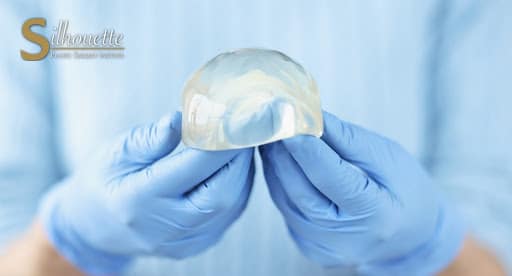How Does Calf Implant Surgery Work?
A qualified plastic surgeon, like Dr. Daneshmand, can complete a calf implant surgery in about an hour as an outpatient procedure. In other words, this surgery is quick and you can go home the same day.
Before the cosmetic procedure, Dr. Daneshmand will give you general anesthesia either intravenously or through a mask in order to put you to sleep. Then he will make an incision behind each knee and insert a silicone implant over each calf muscle (AKA: the gastrocnemius muscle). Lastly, he’ll stitch up the skin in each lower leg and allow you to wake up from anesthesia before sending you home to recover.
Calf Augmentation Surgery Recovery
You’ll likely experience pain, swelling, and bruising for two weeks after your procedure, so it’s best to take some time off work. After those two weeks, you should be able to get back to your normal activities.
Dr. Daneshmand gives his patients specific recovery instructions for all surgical procedures. But for calf augmentation, you’ll likely have to wear compression stockings on your lower legs and keep your legs elevated in order to reduce swelling. You can begin walking on day two of your recovery. While it’s recommended to move around a little bit every day, you should certainly avoid strenuous exercise (such as weight lifting or running) while you’re healing.
Dr. Daneshmand will likely give you pain medication during the healing process. Additionally, he’ll recommend that you drink lots of water and eat healthy meals in order to assist the body’s natural healing process. Don’t drink alcohol for at least three weeks after your calf augmentation in order to avoid complications during the healing process.
Calf Implant Surgery Risks and Side Effects
As with any plastic surgery, calf augmentation comes with its own set of risks. Minor side effects from the surgery itself include pain, swelling, bruising, and redness. Some patients experience negative side effects from general anesthesia, such as nausea and vomiting, once they wake up from surgery.
While calf implant surgery is generally safe – especially with a board-certified plastic surgeon like Dr. Daneshmand – some patients can experience more severe side effects such as excess bleeding and infection. If you experience bleeding that doesn’t stop, pus leaking from your incisions, fever, or excess swelling, seek immediate medical attention.
You also have to consider the general risks that come with silicone implants. They can rupture and even move to other parts of the body. Additionally, patients with
breast implants and calf implants have to consider the risk of capsular contracture. This complication occurs when scar tissue forms around the silicone implants.
Capsular contracture can cause discomfort and odd-looking calves. You will likely have to undergo revision surgery if you experience this complication.
How Much Are Calf Implants?
The average cost of a calf augmentation in 2020 was $3,845 according to
data from the American Society of Plastic Surgeons. Remember that this is just an average price tag. Your procedure may cost more or less, depending on your clinic and which part of the country you undergo cosmetic surgery. Additionally, it’s important to remember that insurance doesn’t cover most cosmetic procedures because they’re considered elective, non-medically necessary procedures. So you’ll likely have to pay for your calf implants out of pocket.
How Long Do Calf Implants Last?
Just like any silicone implants, calf implants can last up to 10 or 15 years, as long as they don’t move or rupture in the body. It’s important to note that you’ll likely have to undergo another calf augmentation several years down the road because silicone implants can break down as you age.
Should I Get Fat Grafting or Calf Implants?
Autologous fat grafting is another surgical option that can make your lower legs look fuller. When you think of fat grafting, think of
a BBL. During this procedure, your surgeon will basically take fat from another part of your body and inject it somewhere else to make it look bigger. In this case, you could take excess fat from your stomach, for example, and inject it into your calves for the desired outcome of more defined legs.
Fat grafting is less invasive and requires less anesthesia than calf augmentation. Because of those factors, you may have a shorter recovery time and fewer side effects.
In some cases, plastic surgeons will recommend calf augmentation along with fat grafting in order to meet the patient’s goals. If that’s something you’re interested in, make sure to discuss it with Dr. Daneshmand. He will tell you which procedure is best for you depending on your current body shape and your cosmetic goals.
Calf Augmentation Plastic Surgeon in California
At Silhouette Plastic Surgery Institute, we’re proud to offer surgical procedures that can transform the entire body. Our Dr. Daneshmand is a board-certified plastic surgeon who has been performing reconstructive surgery for more than 30 years. When you choose him for your calf augmentation procedure, you’ll know that you’re in good hands. Call
949-359-8397 today for a private consultation.


